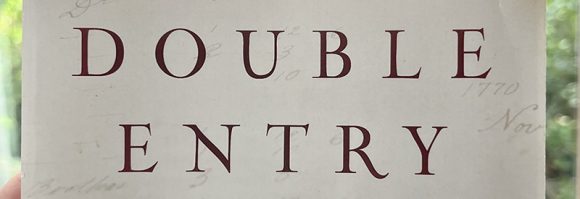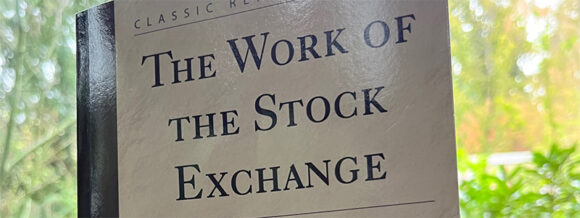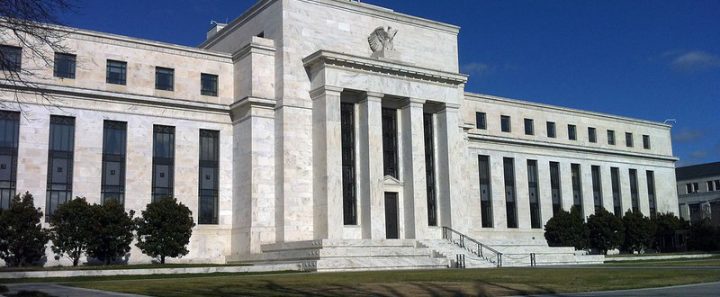
Neither the political nor business news is covering what may be the pivotal story of the 21st Century. The fundamental change in behavior of the Federal Reserve Bank since the Panic of 2007.
That sounds like a dry topic, and I assure you it is. The driest and most dismal corner of economics, itself known as the “dismal science“. But nonetheless something that may change the course of history if it follows history and destroys the value of the U.S. dollar.
This dry and dismal story begins with a balance sheet, a.k.a. the list of things owned by the Federal Reserve.
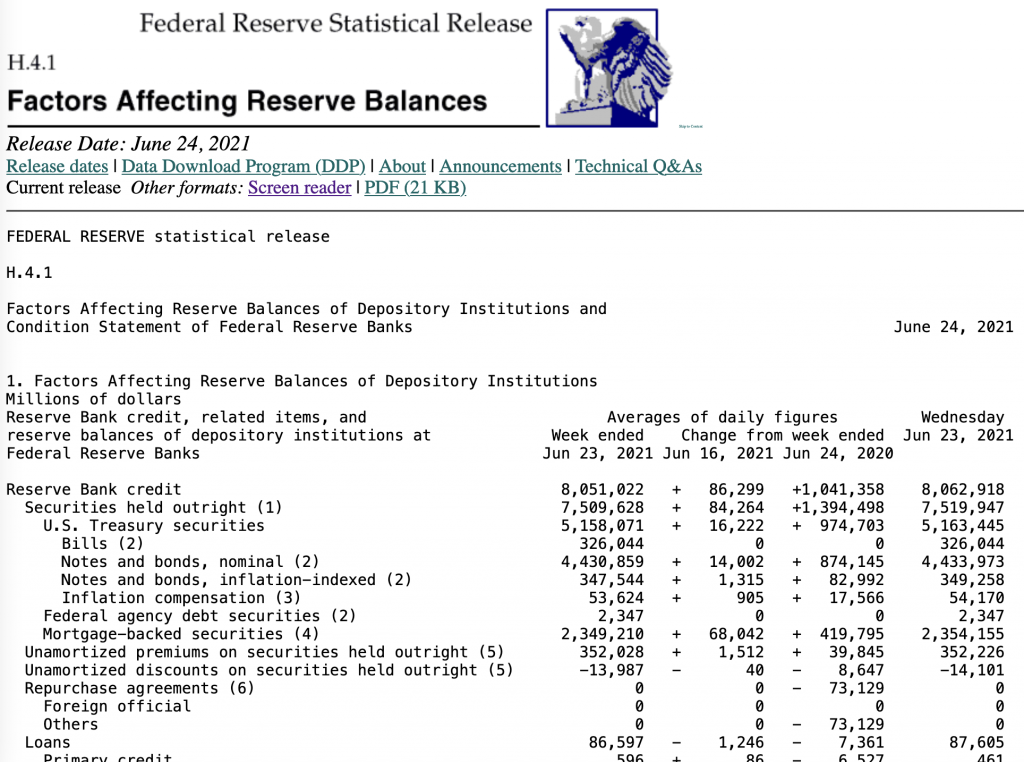
The values are in millions of dollars, the sum it at the top, and thus what looks like an innocuous $8 million is in fact a very worrying $8.05 trillion. Trillion with a T. Trillions as in bigger than nearly every country’s GDP. $8 trillion being more than 25% of the U.S.’ $21 trillion GDP.
Before we ask who and why and where, let’s first look at when. If we look at this same report from January 2020, before the pandemic, the total value was $4.1 trillion.
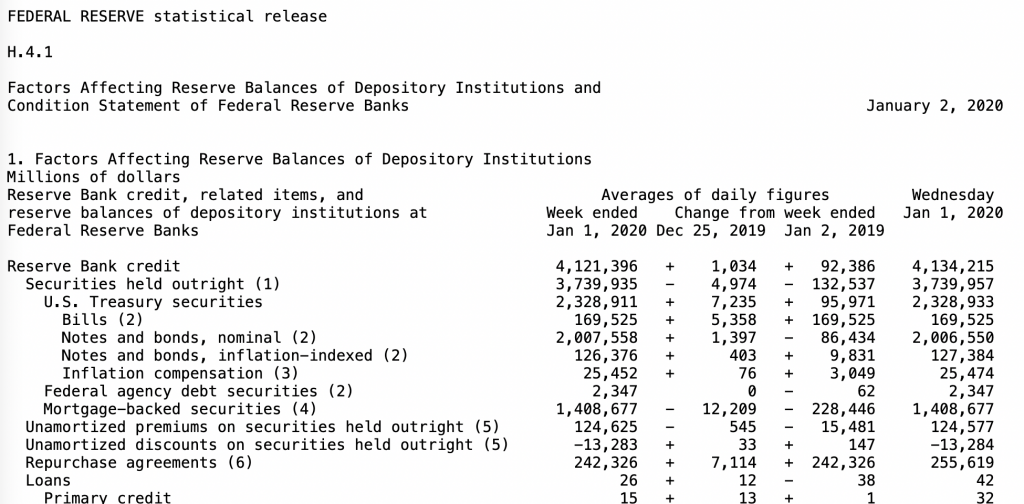
But to explain the importance of this rarely discussed potential problem, look back at this report from January 2007, before the housing bubble burst and the financial system nearly imploded.
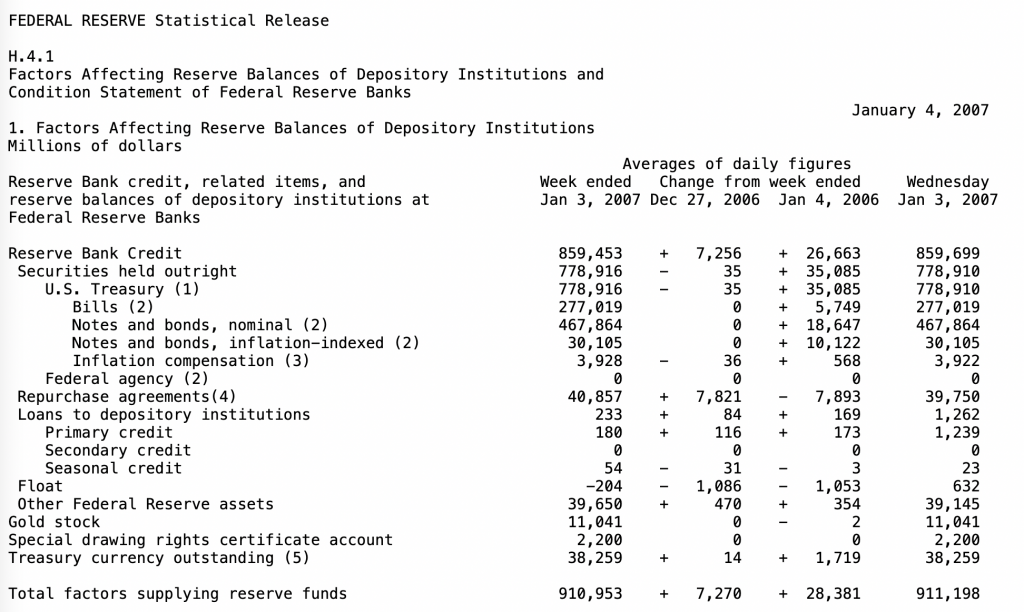
This is what the Fed’s balance sheet looked like for decades. Less than $1 trillion. Most of that in the form of U.S. Treasury bonds, bills, and notes. Basically nothing more than cash held by the Fed to cover any emergencies, and at that really just cash (U.S. government debt being as good as cash) held in trust by the bank of banks in case any of those banks got into trouble.
They virtually all got into trouble in 2007, 2008, and 2009, and the fix was to prop up the financial model by printing $4 trillion. Just keep in mind the verb “printing” is historic. The Fed didn’t actually print anything, it just bought U.S. Treasuries and other debt from banks and other institutions. But rather than paying using existing money, the Fed simply increased the reserve accounts of those banks without taking the money from any existing account. It literally created the money from nothing by adding it to this balance sheet.
If you read Ben Bernanke’s book, he’ll explain why this was needed. I and most everyone else who understands how the money markets and financial markets work will agree it was the only way. A lot of us wondered what happens to the dollar when $3 trillion are created. So far… nothing more than a bubbly stock market.
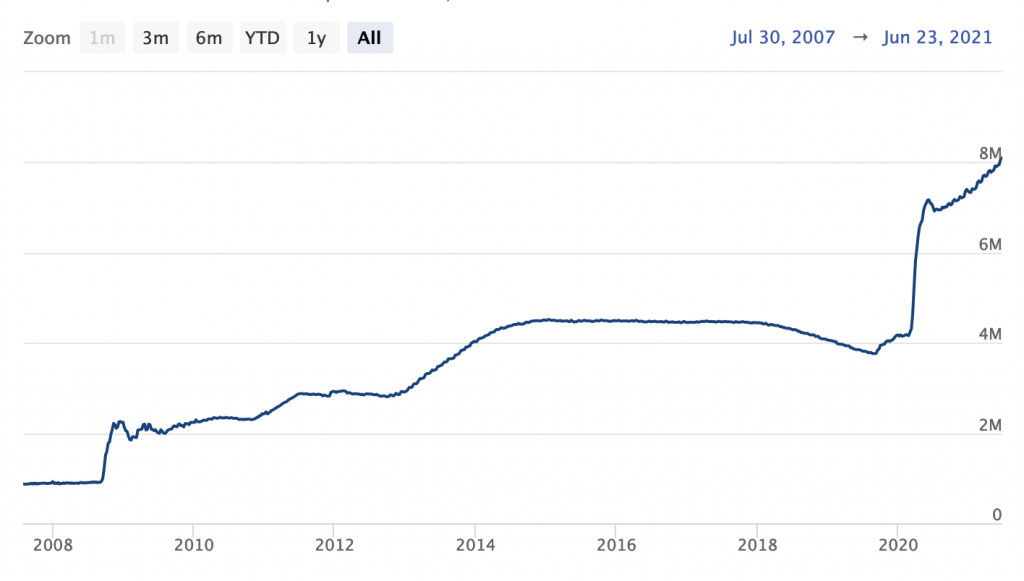
However, that first $3 trillion wasn’t created overnight, it took seven years. You can see this in the graph above from the Fed website. That 2007 value was the norm until the full blown panic in 2008. Various new programs were created in 2008, 2009, 2010 and onward through 2013. By 2018 the Fed started trying to unwind these purchases and shrink their balance sheet. The stock and bond markets didn’t like that and the Fed basically stopped, letting the balance sheet shrink as the various bonds matured.
But then the pandemic hit and as you can see, $3 trillion more was created in a week and another $1 trillion added over the course of the last year.
What does this mean for everyday life? No one knows. At best, nothing. At best the proponents of Modern Monetary Theory are correct and there are no consequences to the government (or in this case the Central Bank) making money that is needed to run the economy.
Looking back at the balance sheet, the vast majority of the value is in U.S. Treasuries. What this means is that these giant pandemic-related spending bills were not actually funded by debt, they were created with newly generated money. Sure, the debt was created and auctioned, but the Fed bought those bonds, bills, and notes from the banks with newly printed money. Sure, the Treasury has to pay the interest on that debt, but the Treasury’s bank is the Fed, and the Fed pays all its surplus profits to the Treasury, so the Treasury is ultimately paying the interest (and later the principal) to the Treasury. So subtract $7 trillion from total listed on the federal debt.
That is all the best case. Worst case is that all this printing matters. History says it does. When the Bank of England tried printing massive amounts of money after World War I the result was massive inflation, the end of the British Pound as the global currency, and London taking second seat behind New York as the global capital center.
This is why I say this could be the story of the century. This $8 trillion could be the beginning of the end of the U.S. dollar as the global currency. The inflation in the news could be, in part, caused by printing $4 trillion in a year. This could be worse, if perchance there is a limit to how much the Fed can print before people stop considering dollars to have value. The Fed propped up not just the U.S. banks in 2007-2009 but the whole global financial system. The Fed did the same again in 2020 when the lockdowns started and the global economy was put on ice.
If nothing else, this new behavior of the Fed as global Central Bank is not a position they’ve been in before. Closest in history was the Bank of England from its creation in 1694 through to WWI when Britain flipped from financier of the world to debtor nation.
This is why I watch this balance sheet, even though no one know what it’s size truly means.


